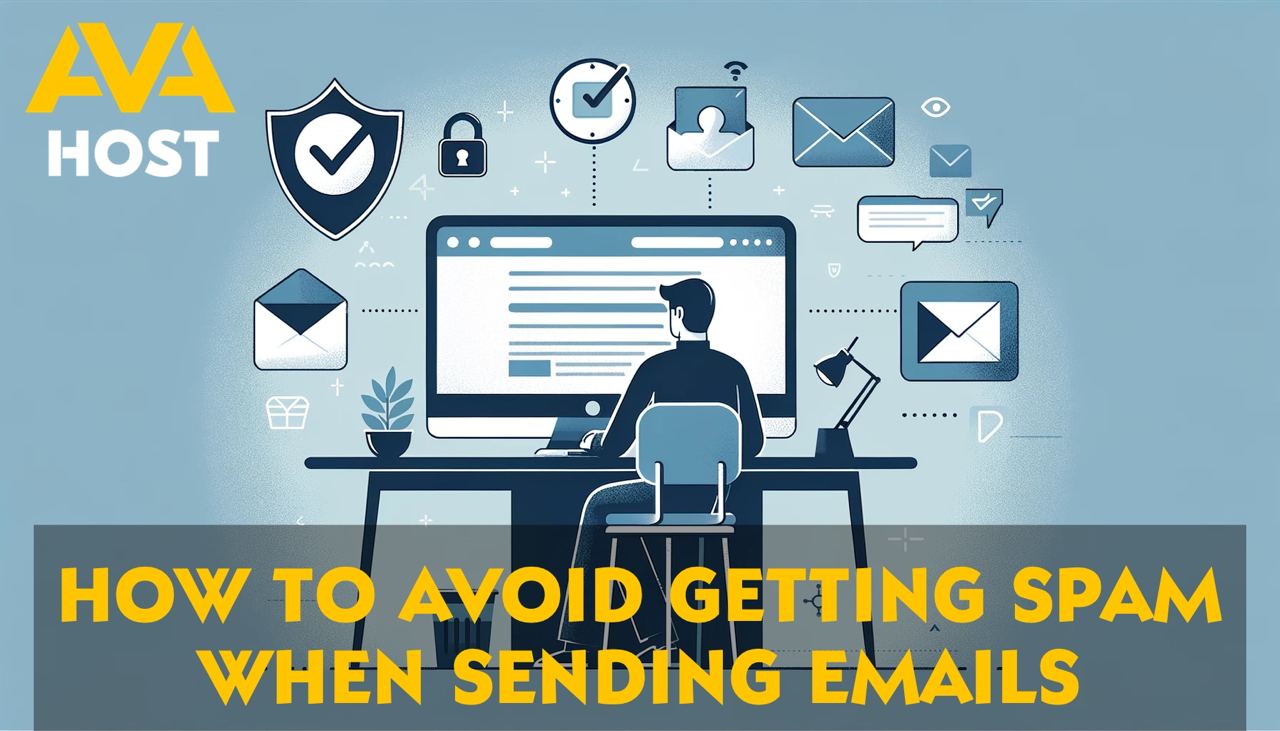How to Avoid getting spam when sending emails

Literally almost every day we use email. Whether it is sending or receiving letters, in the digital age, email has become an indispensable communication tool for both individuals and businesses. However, with the convenience of email comes the nuisance of spam—unsolicited emails that clog up inboxes and waste time. Today, there are built-in spam filters; while these tools help catch most of these unwanted messages, sometimes legitimate emails can be flagged as spam, leading to missed opportunities and frustration. Let’s look at some methods to avoid this, here are some tips to help ensure that your emails are delivered successfully and are not marked as spam:
Use a reliable email tools
Start by using a reliable email provider with strict anti-spam measures. Providers like Gmail, Outlook, and Yahoo have advanced spam filtering systems that help reduce the amount of spam that ends up in your inbox. in AVA HOST we provide VPS with all open ports, for your convenience and reliability of sending letters.
Authenticating your email
Implement email authentication protocols such as SPF (Sender Policy Framework), DKIM (Domain Key Identified Mail), and DMARC (Domain-Based Message Authentication, Reporting and Compliance) to verify the legitimacy of your emails. This helps prevent spammers from spoofing your domain and improves email deliverability.
Avoid words that cause spam
Yes, there are words today that email services define as unwanted. Be mindful of the language you use in your emails. Avoid using words and phrases commonly associated with spam, such as “free,” “urgent,” “buy now,” and excessive use of exclamation marks. These trigger words can make your emails more likely to be flagged as spam by filters.
Personalize your emails
Personalized emails are less likely to be marked as spam compared to regular bulk emails. Address the recipient by name, tailor content to their interests and preferences, and avoid sending identical emails to a large list of recipients.
Optimize your email formatting
Format emails correctly to improve deliverability and readability. Use a clear and concise subject line that accurately reflects the content of the email. Avoid using capital letters and excessive punctuation in the subject line as this may trigger spam filters. Additionally, use a professional email signature with your contact information to establish trust.
Clean out your email list regularly
Periodically clean out your email list to remove inactive or invalid email addresses. Sending emails to outdated or incorrect addresses can increase your spam score and decrease your deliverability. Also, regularly cleaning your email list has several important benefits:
- Improving List Quality: Cleaning your address list helps keep it current and accurate. Removing outdated, inactive, or invalid addresses can reduce bounce rates and improve overall email delivery rates.
- Legal Compliance: Some countries have data protection laws and regulations, such as the GDPR in the European Union or the CAN-SPAM Act in the United States. Cleaning your email list helps you comply with these laws by ensuring you only send messages to those who have opted in to receive your mailings.
- Improved Email Metrics: A clean email list helps improve key email metrics like open rates, click rates, and bounce rates. This can help improve the effectiveness of your marketing campaigns and increase audience engagement.
- Save Resources: Sending emails to outdated or incorrect addresses can be not only wasteful, but also costly. List cleaning helps reduce mailing costs by reducing the number of undelivered messages and retries.
- Maintaining Sender Reputation: Keeping your address list up to date and removing unwanted addresses helps maintain a good sender reputation. High sender reputation improves the likelihood of important messages being delivered to your inbox and reduces the risk of getting caught in spam filters.
Thus, regularly cleaning your email list is an important practice to ensure the effectiveness and deliverability of your email newsletters and compliance with data protection laws.
Provide an option to unsubscribe
Include a visible, easy-to-use unsubscribe option in your emails. This allows recipients to opt out of future communications if they wish, which can help reduce the likelihood of your emails being marked as spam.
Monitor email sending methods
Monitor your email sending practices and track metrics such as bounce rates, open rates, and spam complaints. High bounce rates and spam complaints can negatively impact sender reputation and reduce email deliverability.
By following these guidelines, you can increase the likelihood that your emails will reach the intended recipients’ inboxes without being marked as spam. Remember to remain vigilant and adapt your email sending methods to changes in spam filtering algorithms and rules to maintain high deliverability rates.

